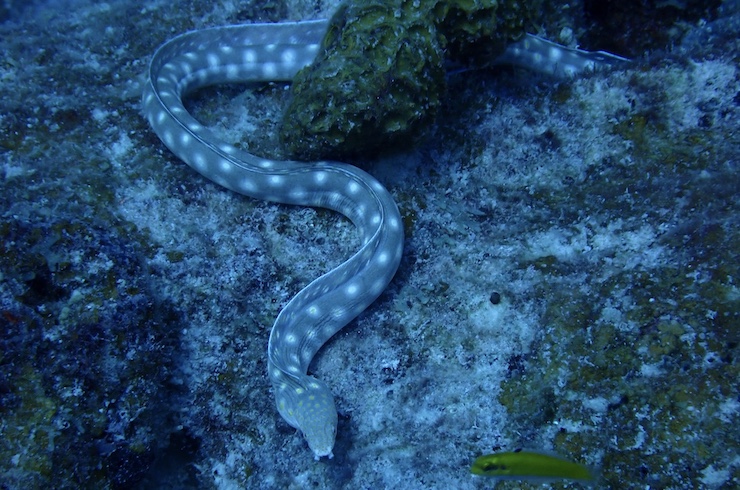
The Saint Lawrence River, traversing through Canada’s Quebec and Ontario, bordering parts of New York, has long been an important North American waterway. It connects the Great Lakes to the Atlantic Ocean, providing the lakes with the necessary nutrients to support an ecological balance. The region was originally inhabited by Iroquoians until European settlers and traders took over control of the river. In the 17th and 18th centuries, the Saint Lawrence River was crucial for the fur and whale trading industry of North America. Today the river is still a key trade passageway allowing sea vessels to travel from the Atlantic Ocean to the Great Lake Basin.
As the Saint Lawrence River plays such a vital role in the economic and ecological well being of North America, it has also become the home base for the River Institute. Established in 1994, along the banks of the Saint Lawrence River in Cornwall, ON, the River Institute is a non-government biological research lab. The goal of the institute is to develop an understanding of how large river ecosystems function and how to protect these systems. One of the research scientists at the River Institute is Matthew Windle “a biologist with experience in environmental science, freshwater ecosystem ecology, spatial analyses, contaminant analyses, and Remotely Piloted Aircraft Systems (RPAS),” as stated in his bio. His research focuses on the ecological health of aquatic environments, specifically in nearshore fish species.
One of the nearshore fish Matt has been studying is the endangered American eel, a species he excitedly calls the most amazing North American freshwater fish. The American eel can be found throughout freshwater estuaries in western North America and plays a crucial part in Canada’s aquatic biodiversity. In 2008, the American eel was listed as endangered, and conservationists fear that wild populations are at extreme risk. The decline in the fish’s numbers can be contributed to over hunting, climate change, pollution, dams blocking spawning routes, and threatened habitats. Matt has been tracking and studying American eels in the Saint Lawrence River since the early 2000’s. As stated on the River Institute’s website, “The research involves telemetry studies of eels in the St. Lawrence River in order to address knowledge gaps regarding habitat associations, seasonal movements, home range and site fidelity, and potential overwintering locations.”
When Matt first began researching American eels, he would capture a population with nets and tag them with radio trackers. He would then release them back into the Saint Lawrence River to see what parts of the river were ideal habitats for the fish. To track the eels, Matt would have to travel across the river in a boat trying to pick up the tracker’s radio signals. It was a slow and monotonous procedure. To try and speed up the process, Matt once rented a plane to fly over the river with a radio receiver, a very expensive day. Matt had heard of other biologists beginning to use drones to aid in data collection, so he decided to look into how to apply drones to his research.
In 2013, Matt became a licensed drone operator, taking both his research and those of his fellow River Institute colleagues to the next level. Matt learned from other aquatic biologists that they were using drones primarily to take aerial photographs of subjects like seals and salmon for population counts. But visually spotting eels from the air in the murky shallows wouldn’t work, Matt knew he had to find a way to stick with his original method of radio tracking. Matt had the idea to attach a radio receiver to their drone that would pick up the signals of the trackers on the eels hiding in the water, much like how when he tried to monitor them from the airplane. At the time, putting a radio receiver on a drone was still a novel idea. Today drones come with a multitude of scientific research payload options.
The drone worked better than Matt could have expected. They were able to cover large areas of the river in short amounts of time. The radio receiver equipped drone gave Matt a way to track American eels in real time, understanding their travel patterns and how the river habitat affects them. As drone technology has progressed, Matt saw their biological use cases jump over the last decade. Now the drones can keep up with the research visions of what scientists have been dreaming of, filling in large data gaps in research.
With Matt’s introduction of drones to the River Institute, a new initiative was formed, FINS (Fish Identification Nearshore Survey). Using drones, FINS has been monitoring fish populations of the upper Saint Lawrence River, how water fluctuations impact fish communities of Hoople Bay, and tracking aquatic environmental changes in plant life and water levels in wetlands surrounding the Saint Lawrence River. It is the advancements in drone technology, Matt points out, that have enabled him and his fellow researchers to get so far in their missions. For example, “Multispectral cameras can also collect information on wavelengths of light that we can’t see,” he said, “which tells you about plant health. So, healthy green plants have lots of chlorophyll in them. And they absorb most of the visible light, and they reflect really strongly near-infrared light.”
On July 30, 2019, the River Institute released a video highlighting some of the projects they are committed to, specifically how drones help them in these missions. The video celebrated a landmark achievement for the institute. The FINS program had successfully used drones to survey its 100,000th fish since the program began using drones in 2015. While the Saint Lawrence River continues to be a major trade route and source of economic stability, understanding its ecological structure has become vital. The protection of the river’s natural resources has to be met, and drones will continue to be one of the tools making it possible to do so.
|